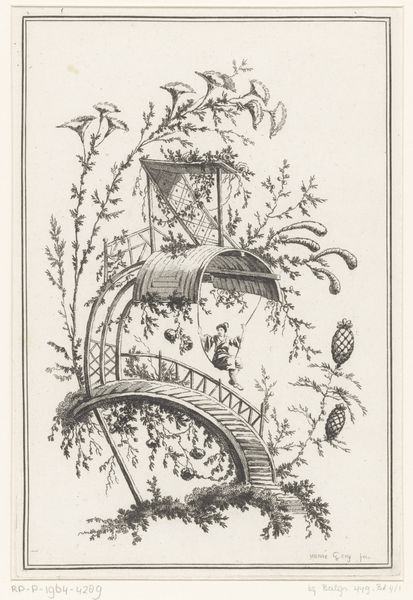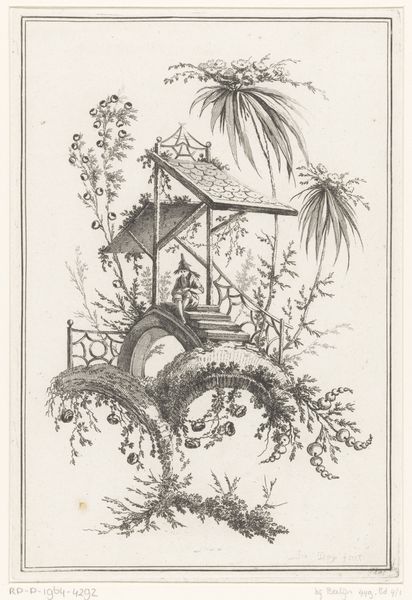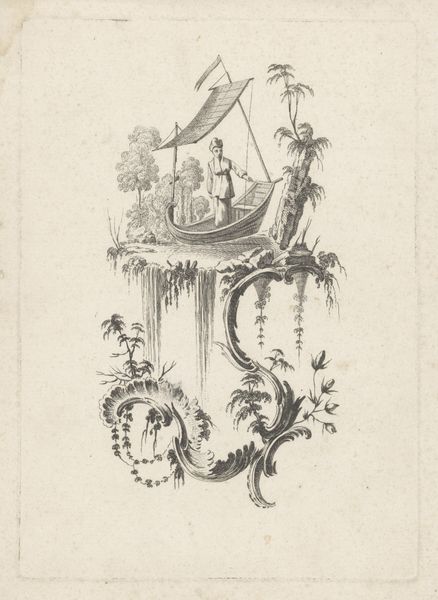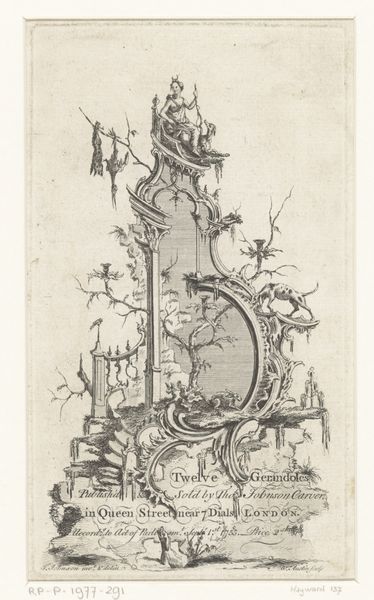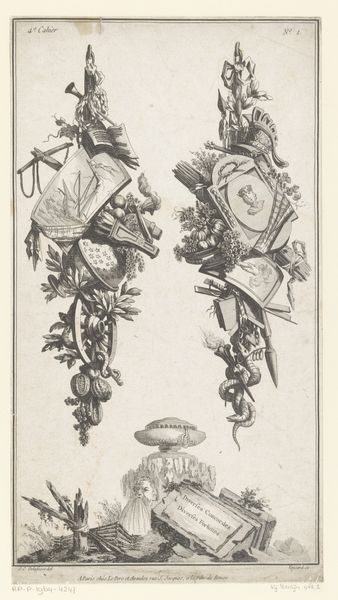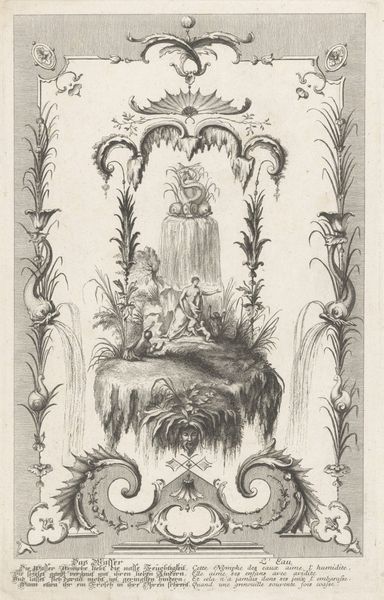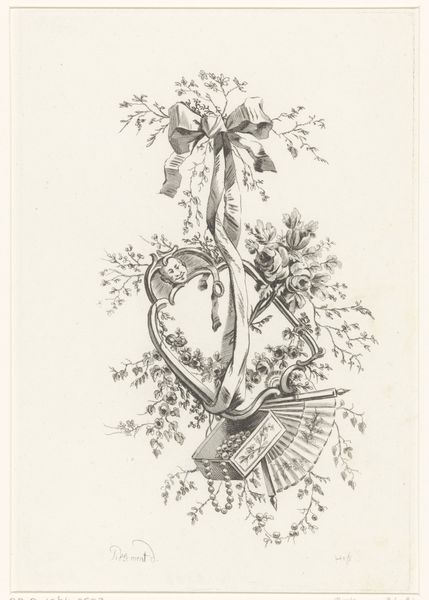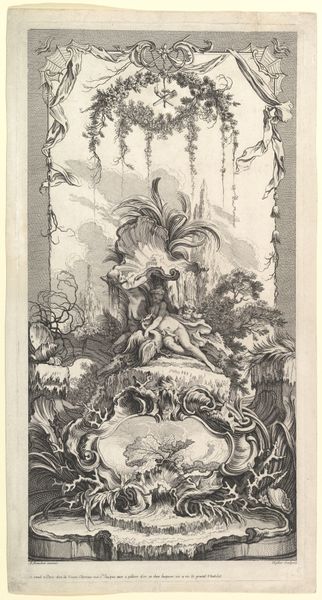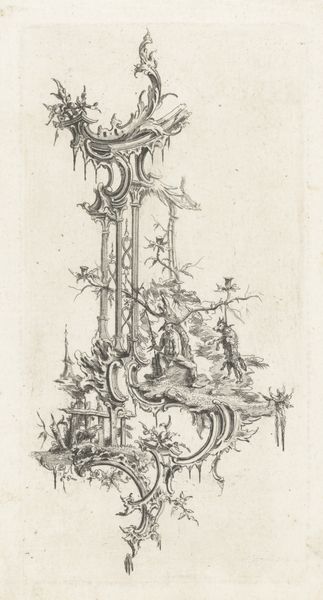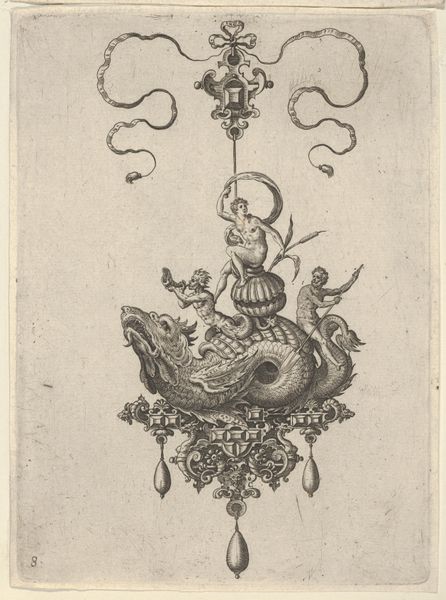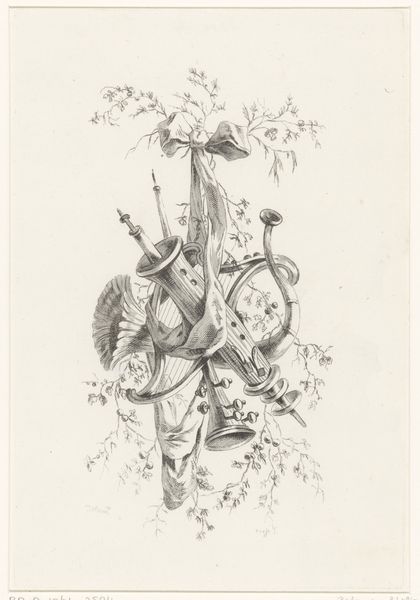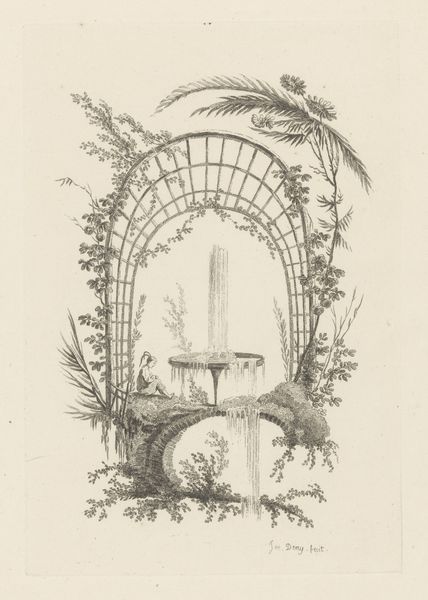
Dimensions: height 241 mm, width 163 mm
Copyright: Rijks Museum: Open Domain
Jeanne Deny made this etching, called "Page from 'Cahier de six Barques Chinoises'," in eighteenth-century France. It’s an elaborate fantasy of Chinese aesthetics; a figure that might be Chinese juggles atop a pagoda-like structure, all framed by stylized flora. This kind of imagery was widespread in Europe at the time. It speaks to a fascination with the Far East but it also tells us something about European attitudes. "Chinoiserie", as it was called, was a fashionable style that reflected the expansion of global trade networks and European imperial ambitions. These exoticized and often inaccurate depictions of Chinese culture served to reinforce a sense of European superiority and to justify colonial endeavors. The Rijksmuseum's collection records the history of Dutch trade, and the institutional context helps us understand this image as part of a broader history of cultural exchange and appropriation. To understand this image better, one might research eighteenth-century French decorative arts, the history of Chinoiserie, and the role of institutions like the Dutch East India Company in shaping European perceptions of China.
Comments
No comments
Be the first to comment and join the conversation on the ultimate creative platform.
